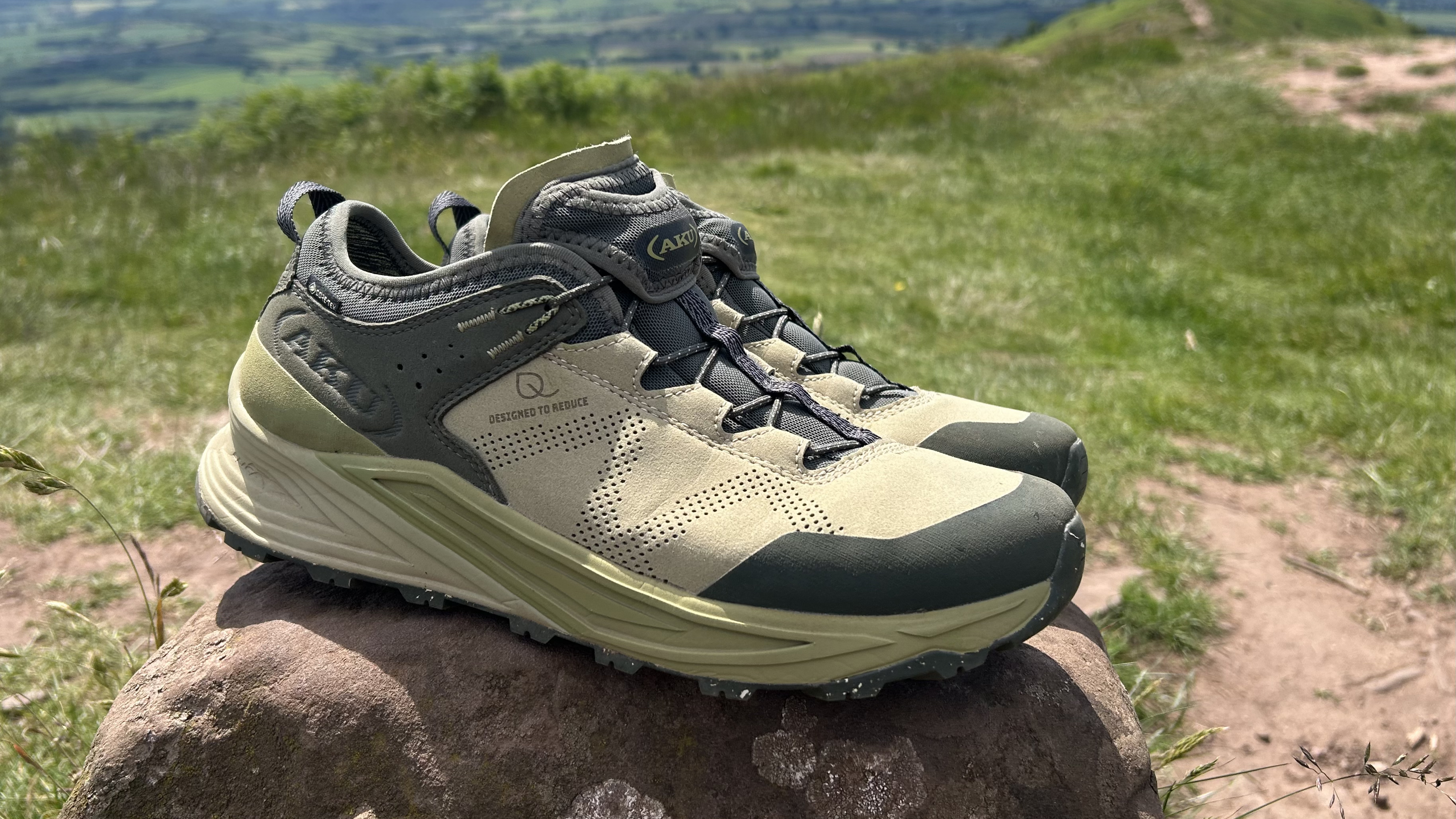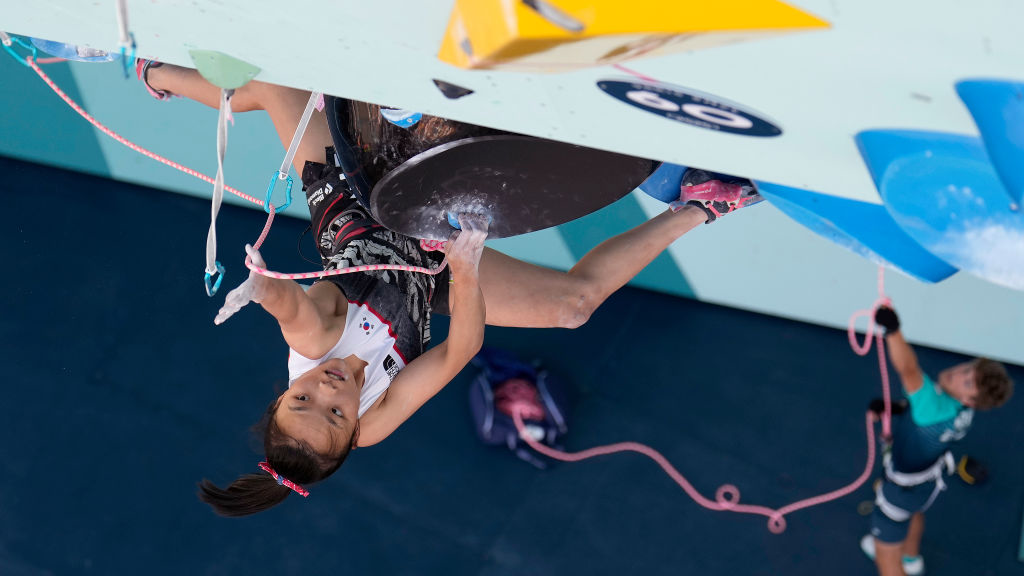Advnture Verdict
This is the epitome of what a modern hiking shoe should be: sustainably crafted, vegan, versatile and containing that little bit of sophistication. The Omnia V-light is comfortable for everyday wear, while being well-featured for more serious outdoor use. A high-quality all-rounder with good environmental credibility, it’s not as technically capable as shoes designed for specific applications and terrain, but most of us will be able to wear it for 90% of our time spent outdoors.
Pros
- +
Highly versatile
- +
Excellent lacing system
- +
Classy aesthetic
- +
Recycled materials used
- +
Well-designed outsole
- +
Supportive and comfortable
- +
Vegan friendly
Cons
- -
Relatively expensive for a hiking shoe
- -
Fit a little on the large side
- -
Not capable enough for more technical mountain days
You can trust Advnture
When I visited Aku’s Montebelluna HQ in the plains to the south of the Dolomites, one of the presentations we were given detailed the ways the Italian footwear brand was striving to be more sustainable. This is a brand that makes high-quality outdoor footwear, often at a premium price. It’s also a brand that’s well aware that the continued use of virgin materials and animal products is not the future. From the design of the shoe to the distance components have to travel in the supply chain, Aku was in the process of putting every step of its operations under the microscope to pave the way for a more environmentally friendly future.
As part of the trip, we ventured into the Dolomites to test the Aku Slope V-light GTX, a more sustainable reimagining of one of the brand’s classic hiking boots. The V in the name stands for vegan, referring to the use of recycled synthetics over leather in the construction of the upper. This particular boot contained varying levels of recycled materials throughout.
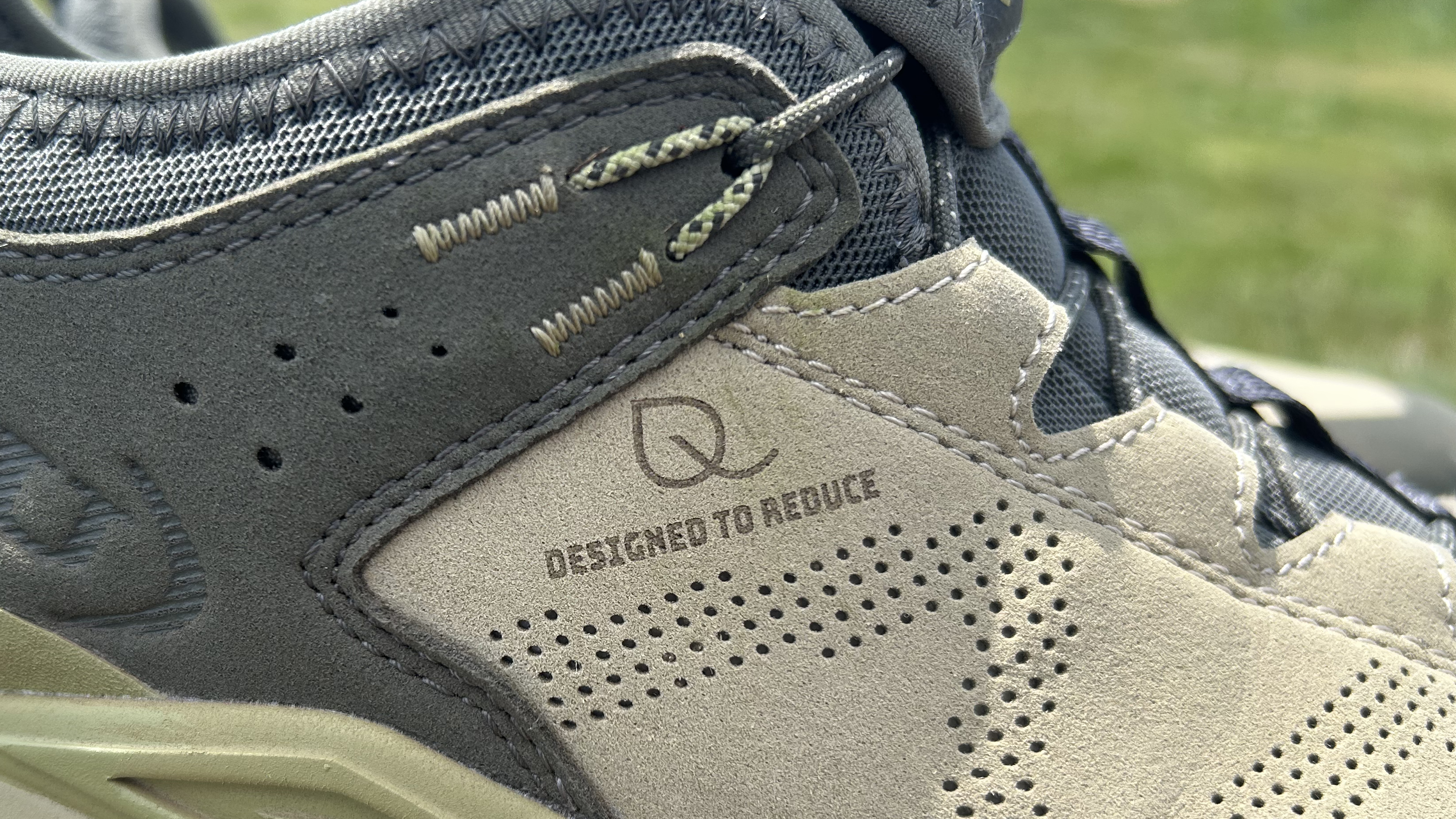
That was then, this is now. Enter the Omnia V-light GTX, the next stage in Aku’s mission. It has ‘designed to reduce’ printed proudly on its upper, along with a little leaf icon. It's a shoe that comes in various colorways, but always with at least a splash of green. We’ll get into exactly why this is in a moment.
The Omnia sits in Aku’s Fast Hiking category. It's a hiking shoe produced with versatility in mind, with design features that give a nod towards the growing e-biking trend on the European continent too.
The Omnia isn’t currently available in the US, though Aku’s award-winning Rocket DFS GTX is a superb fast hiking alternative that we also rate highly.
First impressions
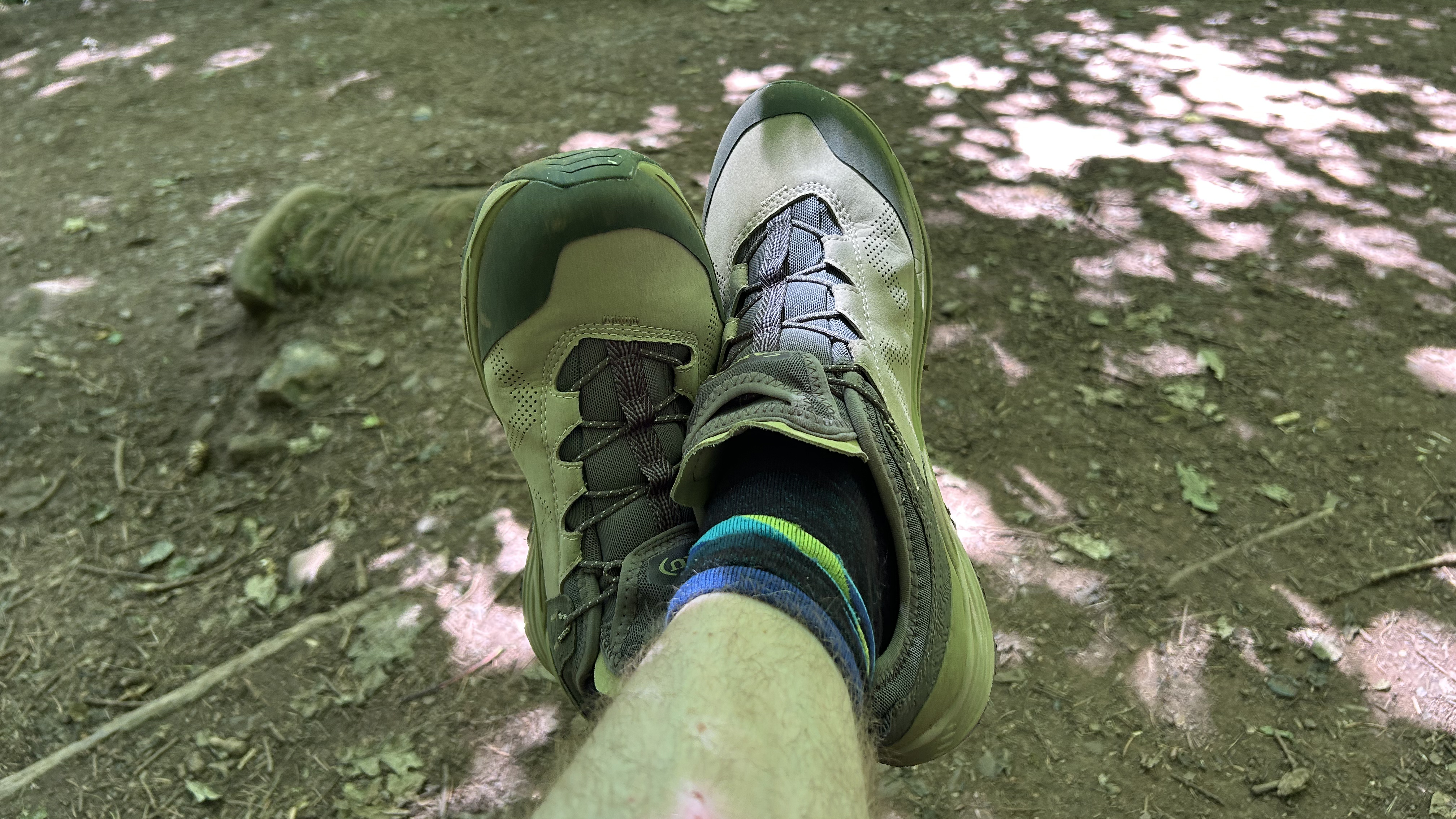
RRP: £160 (UK)
Gender: Men’s and women’s versions available
Weight (per shoe): 11.6oz / 330g
Materials: 50% recycled post-consumer polyester upper with PFAS-free water-repellent treatment; 100% recycled pre-consumer cotton laces; ePE Gore-Tex membrane; dual-intensity bio-based EVA midsole; 10% recycled rubber Kaly Tenuta Grip outsole
Colors: Light blue & green / Beige & olive / Brown & green (EU only), Light Green & turquoise (EU only) / Grey & orange (EU only)
Compatibility: walking, fast hiking, cycling, everyday wear
I’ve had the pleasure of sampling several pairs of Aku shoes, from the Tengu GTX, a mountaineering boot; to the Rock DFS GTX, an innovative approach shoe; and the excellent Trekker Lite II GTX, a standard 3-season hiking boot. What sets the Omnia apart from all of these is its more casual look and feel. The shoes mentioned above are tools for specific purposes, and I wouldn’t necessarily want to wear them for everyday walks or to the bar, despite their technical qualities.
The Omnia is more relaxed, more easy-going, happy to go with the flow. It’s attractive and comfortable – I’d wear it to the pub, I’d wear it on the trails and I'd wear it in the mountains, up to a point. Its name is an unsubtle hint towards these qualities: omnia is Latin for ‘everything’. Aku goes as far as suggesting a few use cases in embossed writing on the sole: e-bike, fast-hike, commute. We get the picture. This is a versatile shoe for everyday adventures.
All the latest inspiration, tips and guides to help you plan your next Advnture!
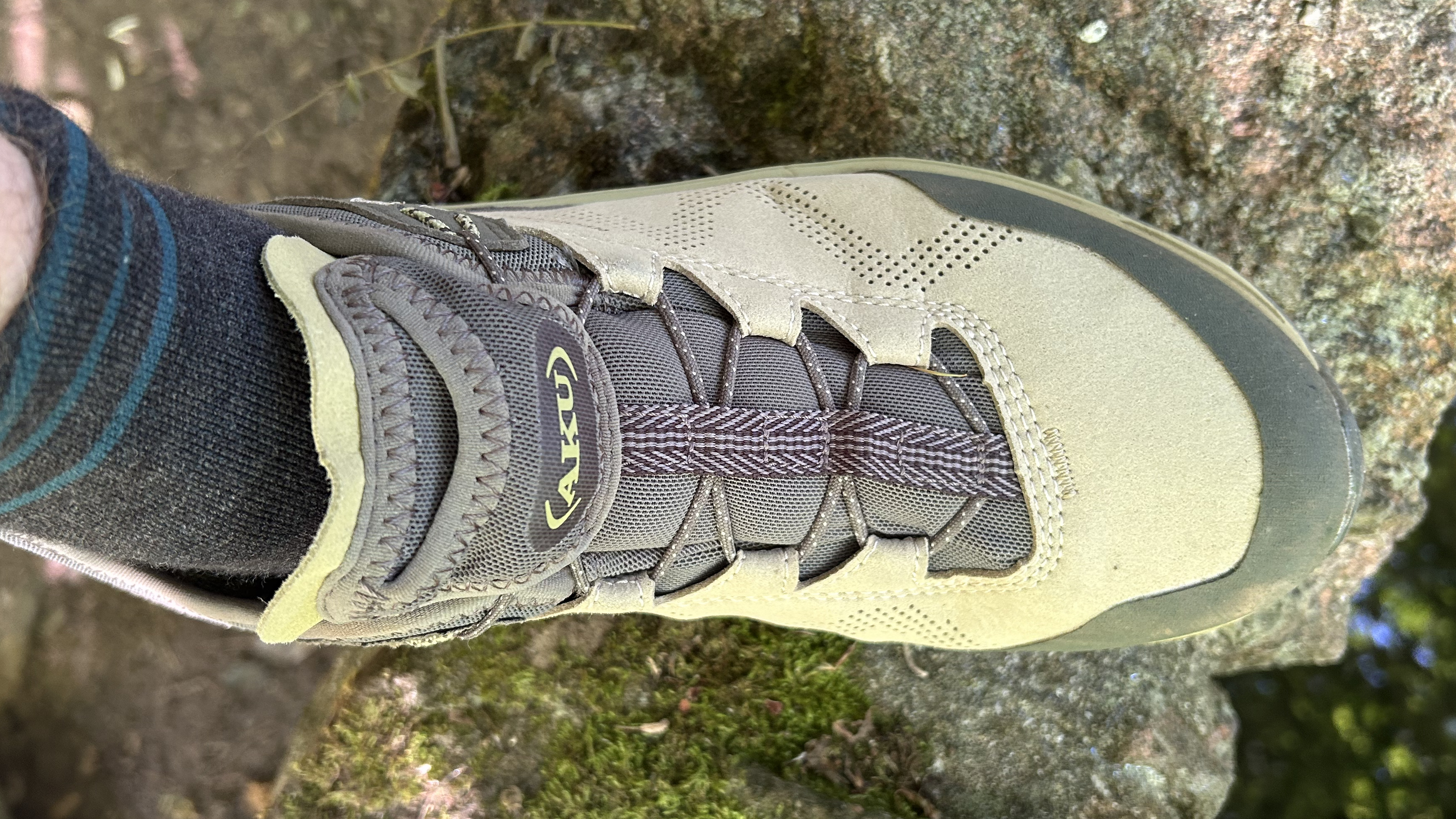
I immediately liked the lacing, which bears a resemblance to Salomon’s Quicklace system. Here, it’s ingeniously threaded through a pouch in the tongue, making it easy to hide away once tightened up. It’s a smart look. I also liked the overall aesthetic – it looks like a hiking shoe but it’s not flashy. It’s got that understated Italian class that’s hard to define or replicate.
The fit is spacious, probably more so than I’d like. Even when I ramped up the laces as tight as I could get them, I didn’t feel particularly locked in. I was interested to see what this would mean once I hit the more demanding trails.
Playing the percentages
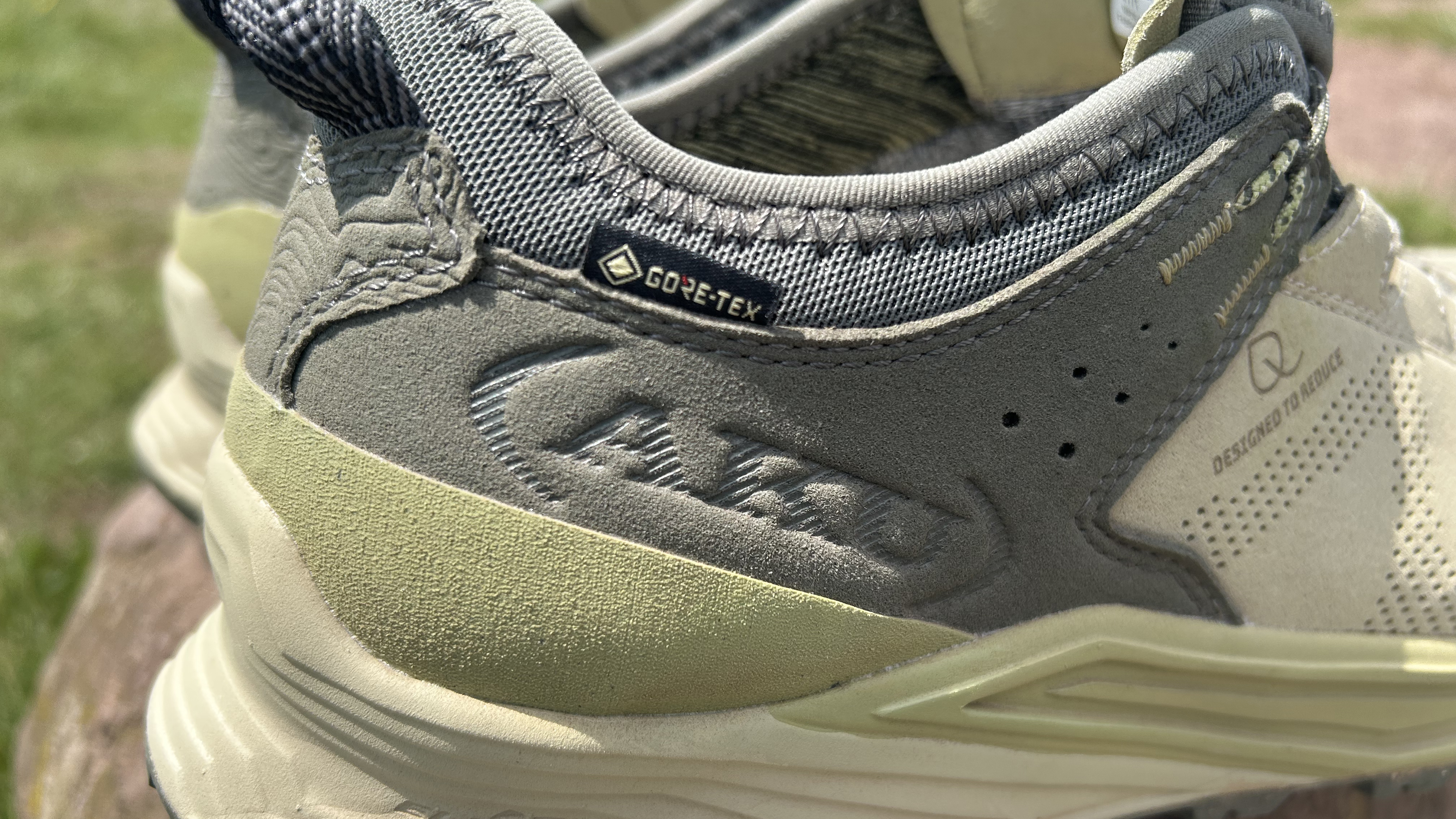
Plenty of recycled content has gone into the construction of the Omnia, with different component parts featuring different amounts. Starting with the polyester upper, around 50% of the main fabric is recycled. The face fabric and backing fabric contain 70% recycled polyester and polyamide respectively. Meanwhile, they’re also 100% PFAS-free, meaning they don’t contain perfluorocarbons, a ‘forever chemical’ that studies suggest can have harmful effects on overall health.
In the laces, yarns and webbings, Aku does even better, boasting 100% recycled cotton in the laces, and 100% recycled polyester elsewhere. Bored of percentages yet? Strap in, we’re just getting started. Or you could just skip to the performance features, it’s up to you.
The Omnia looks like a hiking shoe, but it’s not flashy. It’s got that understated Italian class that’s hard to define
Moving down the shoe, we first come to the Ortholite HybridPlus insole, which contains 50% recycled polyurethane. Then there’s the midsole, with its 10% biobased sugarcane EVA and, finally, the 10% recycled synthetic rubber in the proprietary Tenuta outsole. Yes, Aku have developed their own compound here, rather than relying on their usual collab with Vibram. The compound used is designed for a mix of technical off-road surfaces and urban use.
Another design feature that makes the Omnia’s that little bit greener is the way that the midsole and outsole are co-moulded together, reducing the use of adhesives in the construction.
Performance features
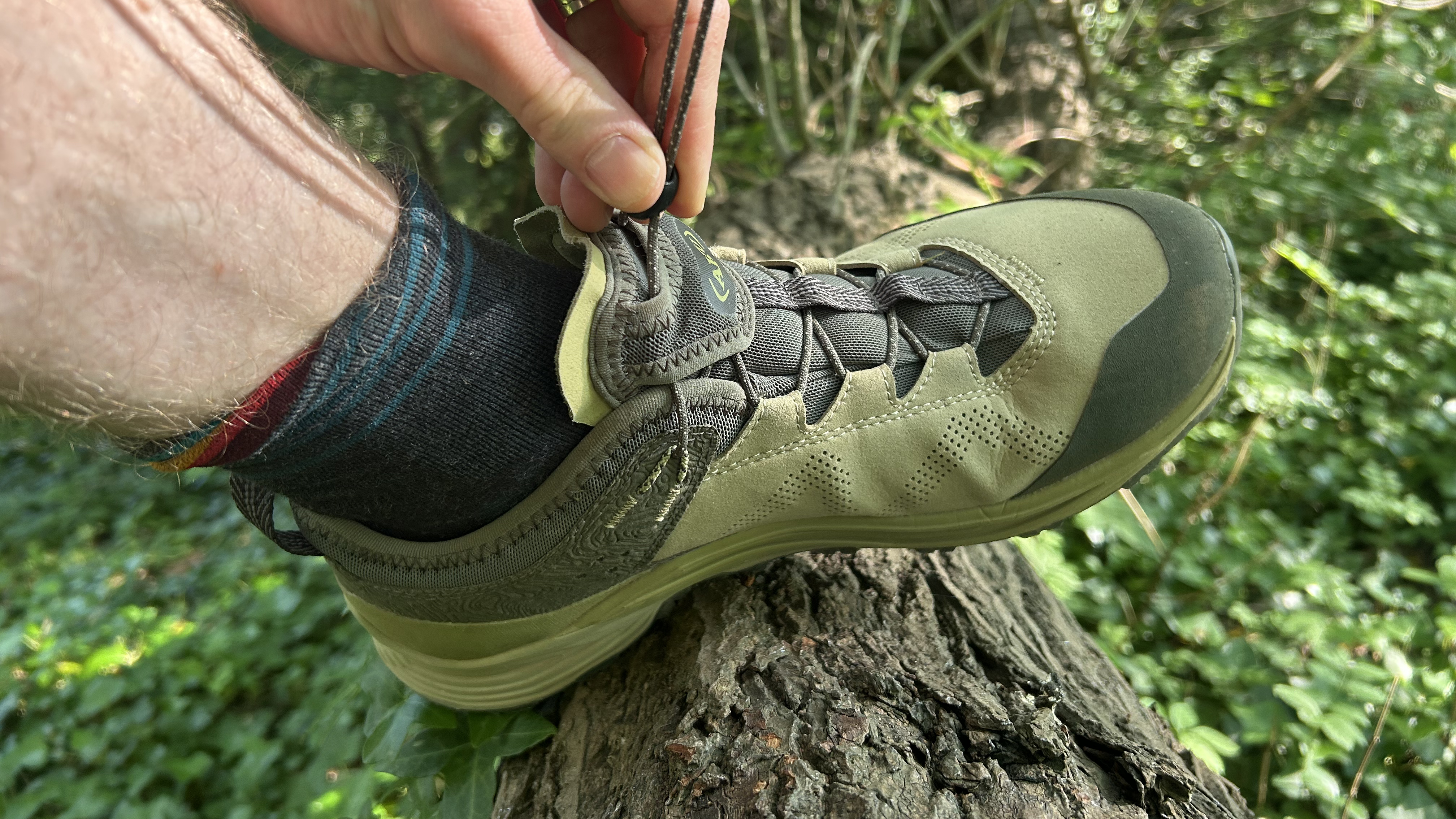
Unless you hike in predominantly dry environments, waterproof qualities are more than desirable in your hiking footwear. Aku has called upon its American friends at Gore-Tex to supply the breathable, waterproof membrane. In this case, it’s Gore-Tex’s Most Breathable Reycled Lining that’s put to use which, as its name suggests, is a particularly breathable membrane. It’ll also keep water at bay, stopping it from invading the inner sanctum of the shoe. However, the low cut of the Omnia’s means that they’re not great for tramping through boggy ground, where water is liable to get in over the top.
The lacing system is pretty much the same as Salomon’s Quicklace, utilizing a sliding buckle to achieve the desired tightness. The elasticated lacing pouch on top of the tongue is a superb design feature. Once I’d tightened everything up, I could simply stash the system into the pouch. It’s convenient and looks rather tidy too.
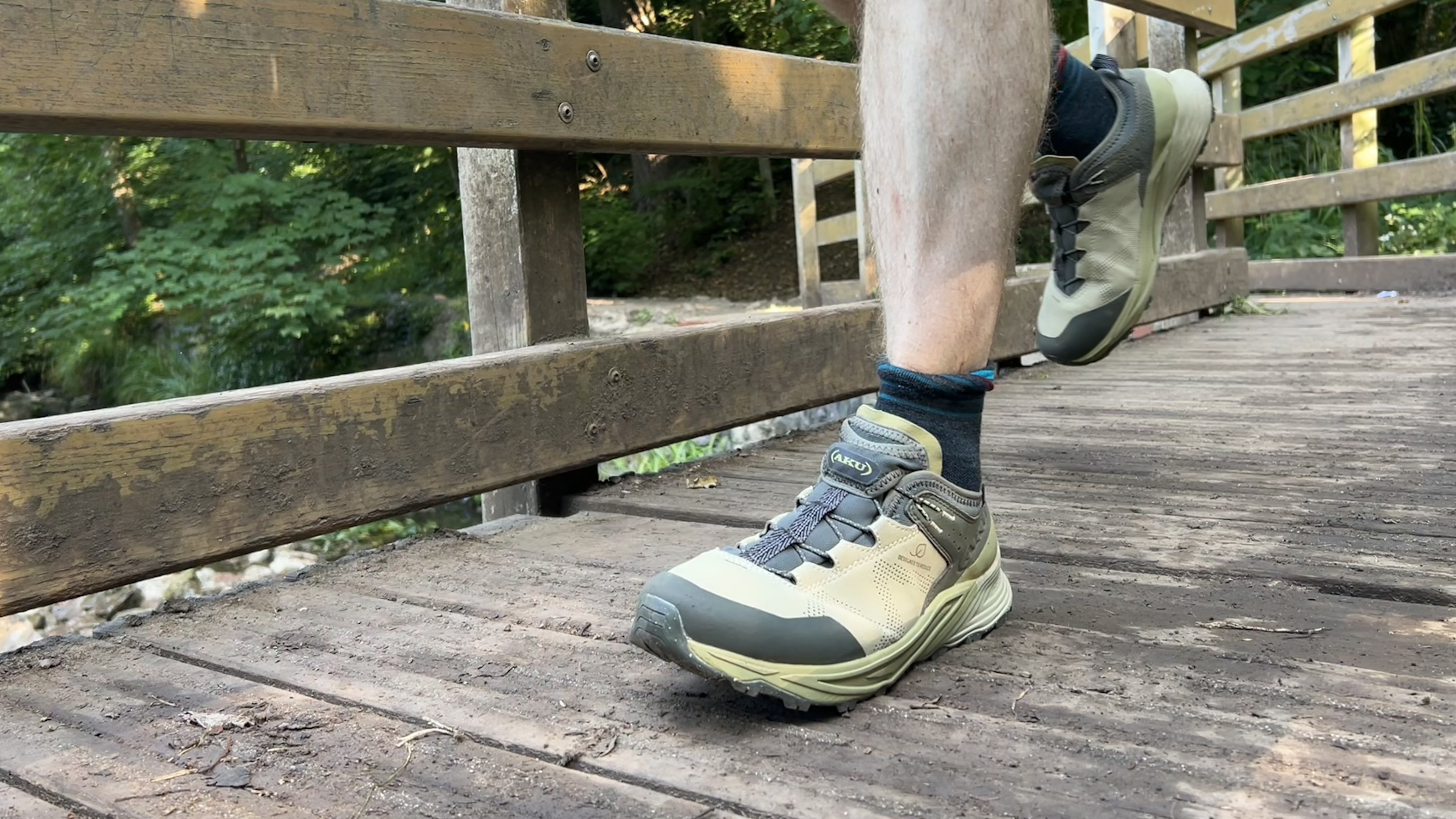
As I’ve come to expect from Aku’s shoes, the Omnia features the Elica natural stride system, which follows the anatomy of the foot to distribute the load, thus reducing the impact and strain felt with each step. It all starts with the Aku’s last, which is oppositely inclined from the forefoot to the heel and works with the biomechanics of a trekker’s stride. The bio-based EVA midsole works with this to cushioning and propulsion. To cut through the jargon, I’ve always found that Aku’s shoes were comfortable to walk in, providing appropriate stability on rugged terrain.
As mentioned, Aku uses its proprietary Tenuta compound for the outsole. There are a few subtle design features going on in the design of the lug pattern. The 6mm lugs provide the tread needed for a variety of trail surfaces, from dry rock to soggy, soft moorland. However, they’re spaced closer together in the inner forefoot area to provide the ideal grip on e-bike pedals. I’m admittedly not a cycling expert, so I can’t attest as to why Aku names e-biking specifically here over just general cycling – but this is a thoughtful touch that underlines the versatility of the shoe.
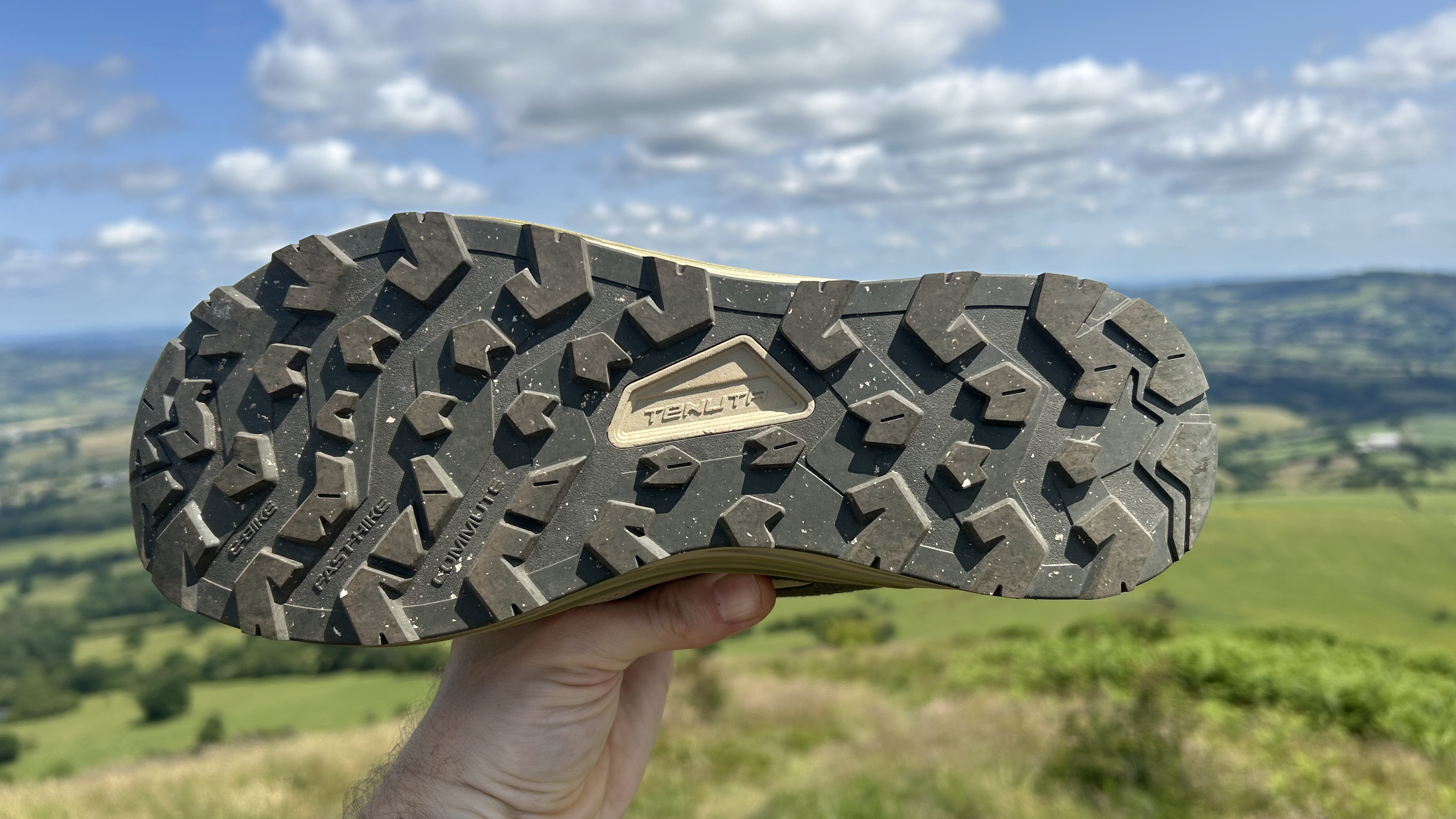
The lugs are also spaced closer together at the toes and the heel in much the same way as an approach shoe's would be. This is to provide traction when scrambling on rock, using techniques such as edging and smearing. It’s not quite as comprehensive a climbing zone as you get on dedicated mountaineering footwear, but it’s there nonetheless.
The Omnia is also fairly protective when it comes to rock abrasion. There’s a reinforced toe cap with a rand around the forefoot, as well as reinforcement towards the heel. It’s about the right balance between weight, style and shielding for a shoe like this. Too much protection and you risk the shoe becoming too heavy and less stylish for more casual use.
On the trails
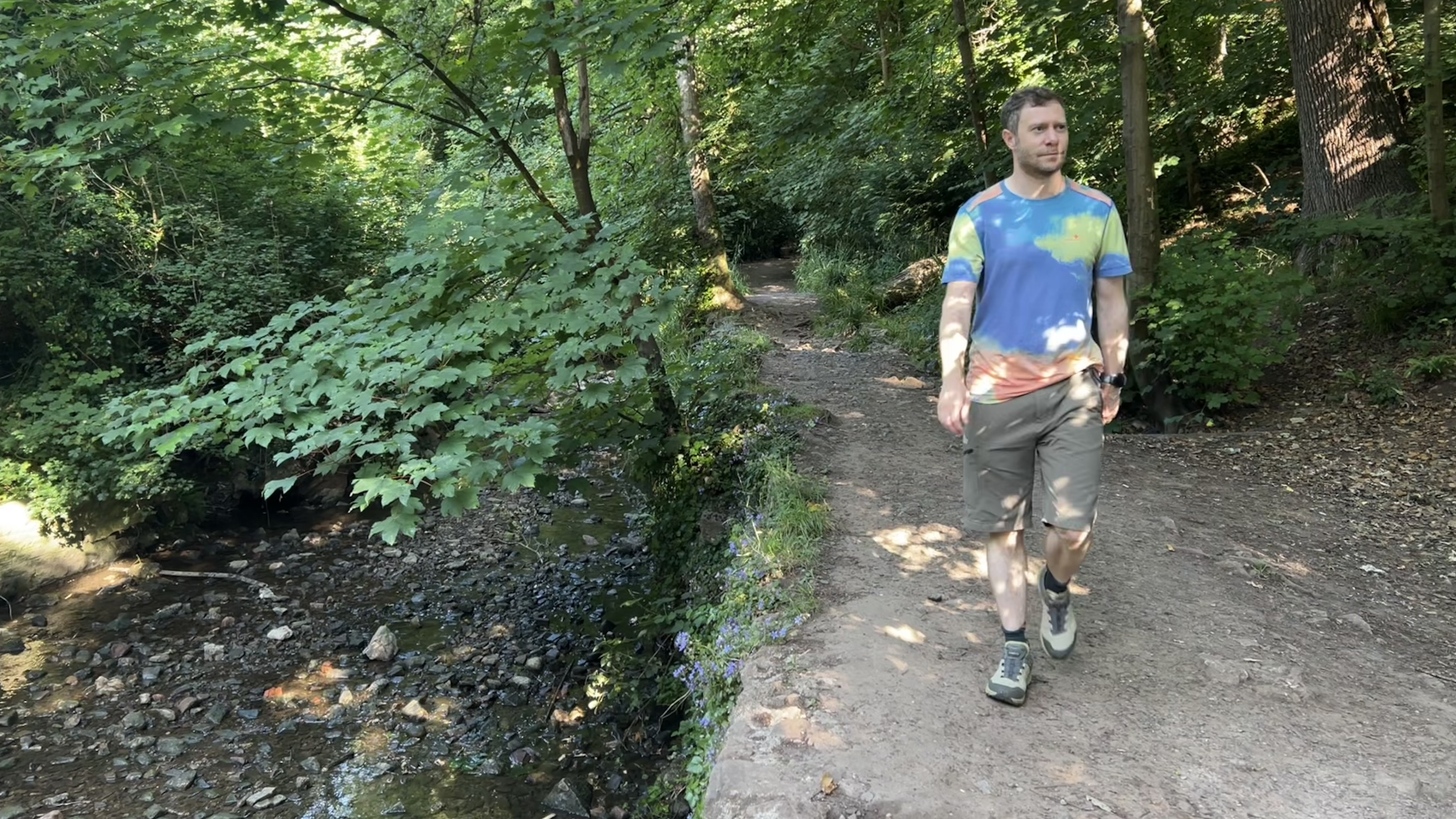
I’ve been testing the Omnia through the spring and early summer seasons on my local trails around Bristol and in the hills of the Bannau Brycheiniog (Brecon Beacons) National Park in South Wales. A pleasure to wear for the everyday, I got on very well with them. The Omnia is a shoe that will see plenty of general use thanks to its versatility.
I’m a big fan of the lacing system. Not only does it look smart, it’s convenient to use and also allowed me to simply slip my foot in and out of the shoe when loosened. I also liked that there’s a fabric loop at the heel for attaching to carabiners and the like.
The Omnia’s upper isn’t particularly cushioned, though its materials are relatively soft and flexible. So, while it’s not a shoe that gives your feet a warm cuddle, neither is it as rough and ready as something like Scarpa’s Rapid XT approach shoe. I found it was comfortable to wear for long periods, though there are both warmer options for sub-zero temps and more breathable options for faster endeavors.
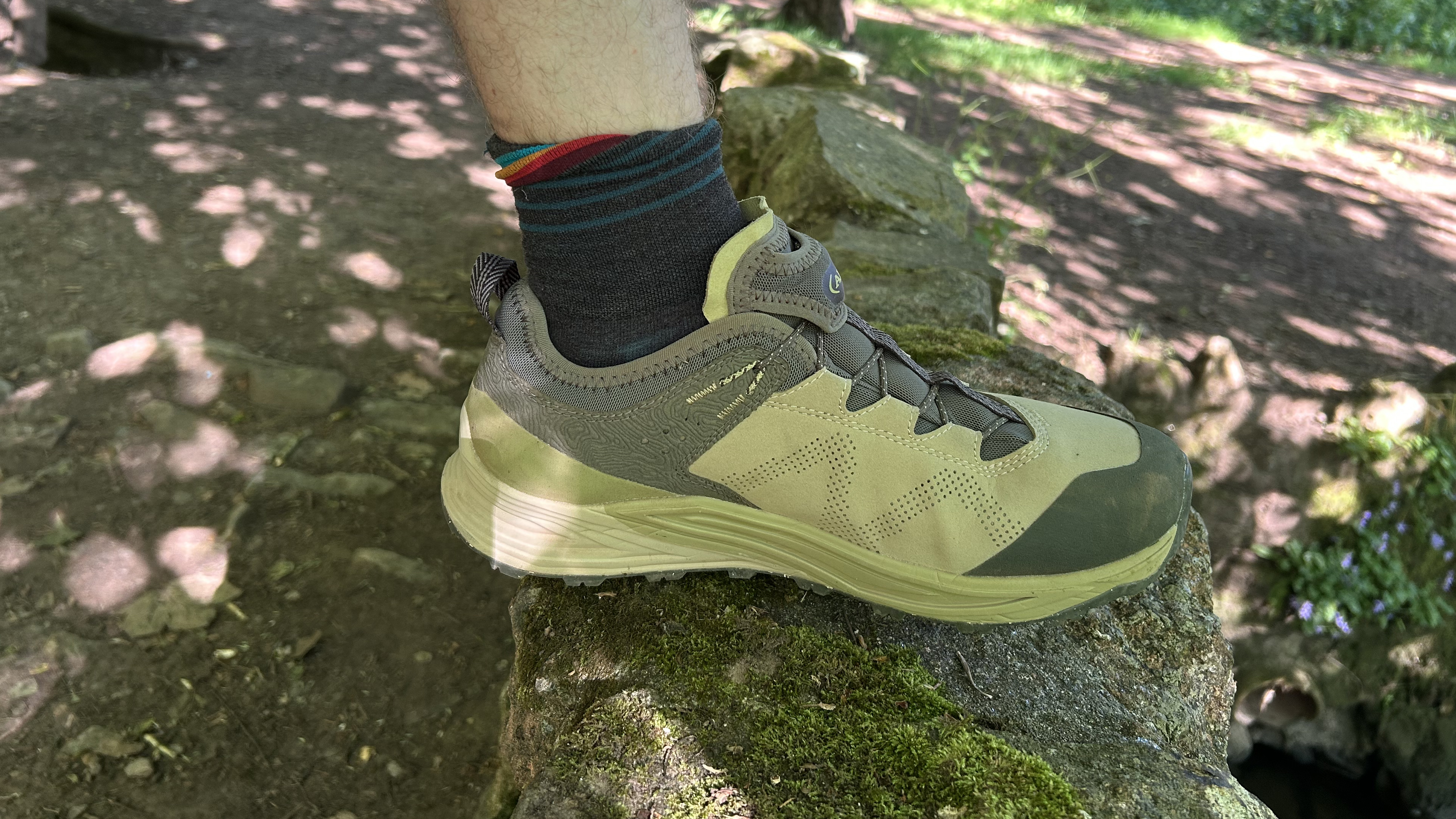
And so, to the slightly relaxed fit that I mentioned earlier. In general, I found that this wasn’t an issue, and the shoes remained comfortable and nimble on the trails, providing a nice degree of stability. It was only during sustained descents in the hills that I noticed my toes nudging against the toe box. It might be worth going half a size down from your usual to combat this.
Other than this, it’s low weight and great design made it well suited to hiking in the hills and I could well imagine wearing it for hut-to-hut treks in alpine environments too. As I’ve alluded to already, more technical adventures call for more specialized footwear, while they’re not ideally suited to boggy, moorland terrain due to their low cut. Nevertheless, if you’re after a thoughtfully designed, eco-friendly and versatile hiking shoe, you can’t go far wrong with the Omnia.
Also consider
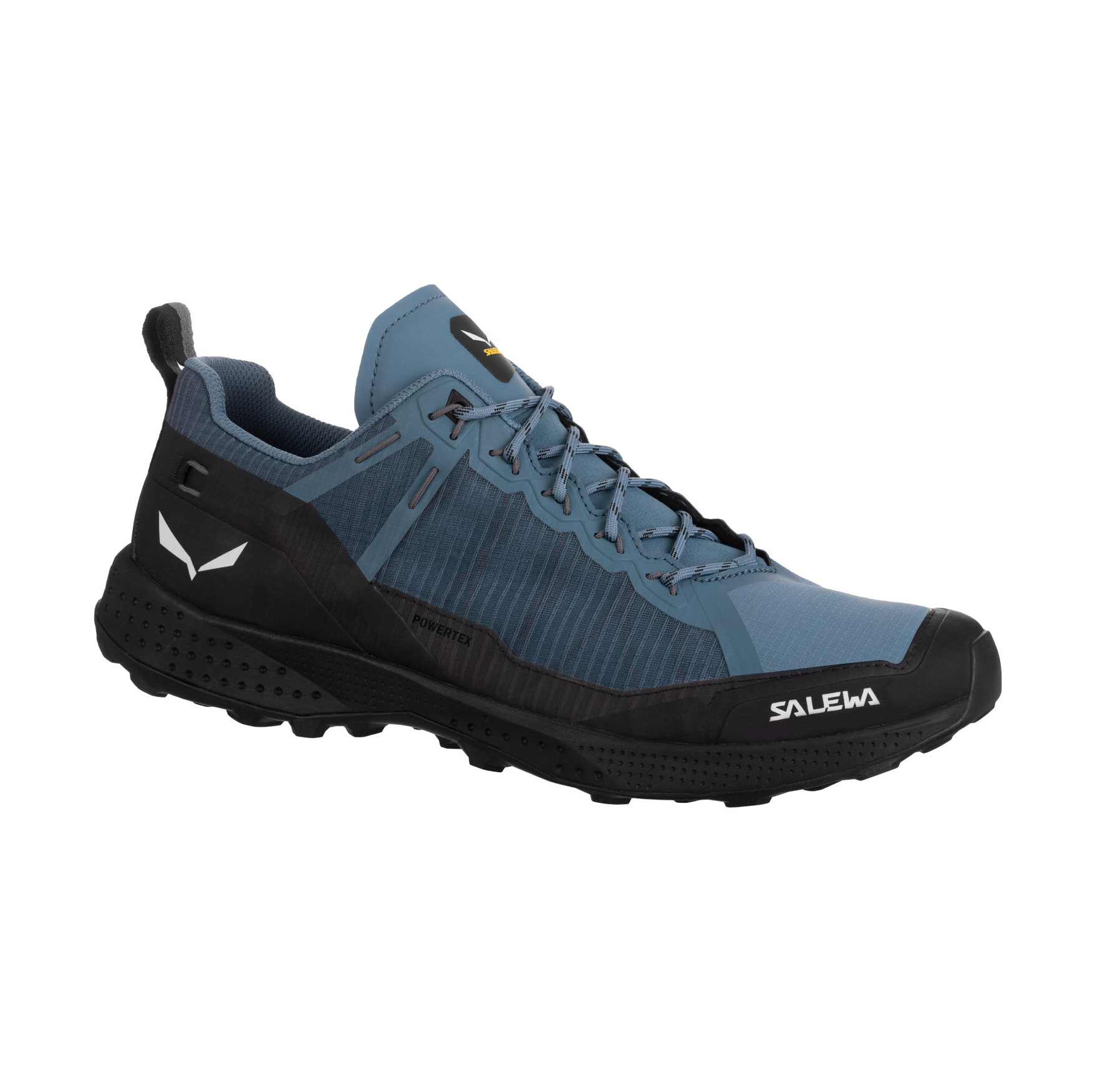
The Salewa is a smart, modern and versatile hiking shoe that's got the technical clout to deal with backcountry escapades but still looks good in the pub. It's both comfortable and lightweight, making it a great shout for speedy missions, and it features Salewa's Powertex waterproof membrane too.
Pros
- Smart, modern looks
- Very comfortable
- Reasonably light for a hiking shoe
- Product monitored for environmental impact
- Decent protection against abrasion
Cons
- Quite pricey for a hiking shoe
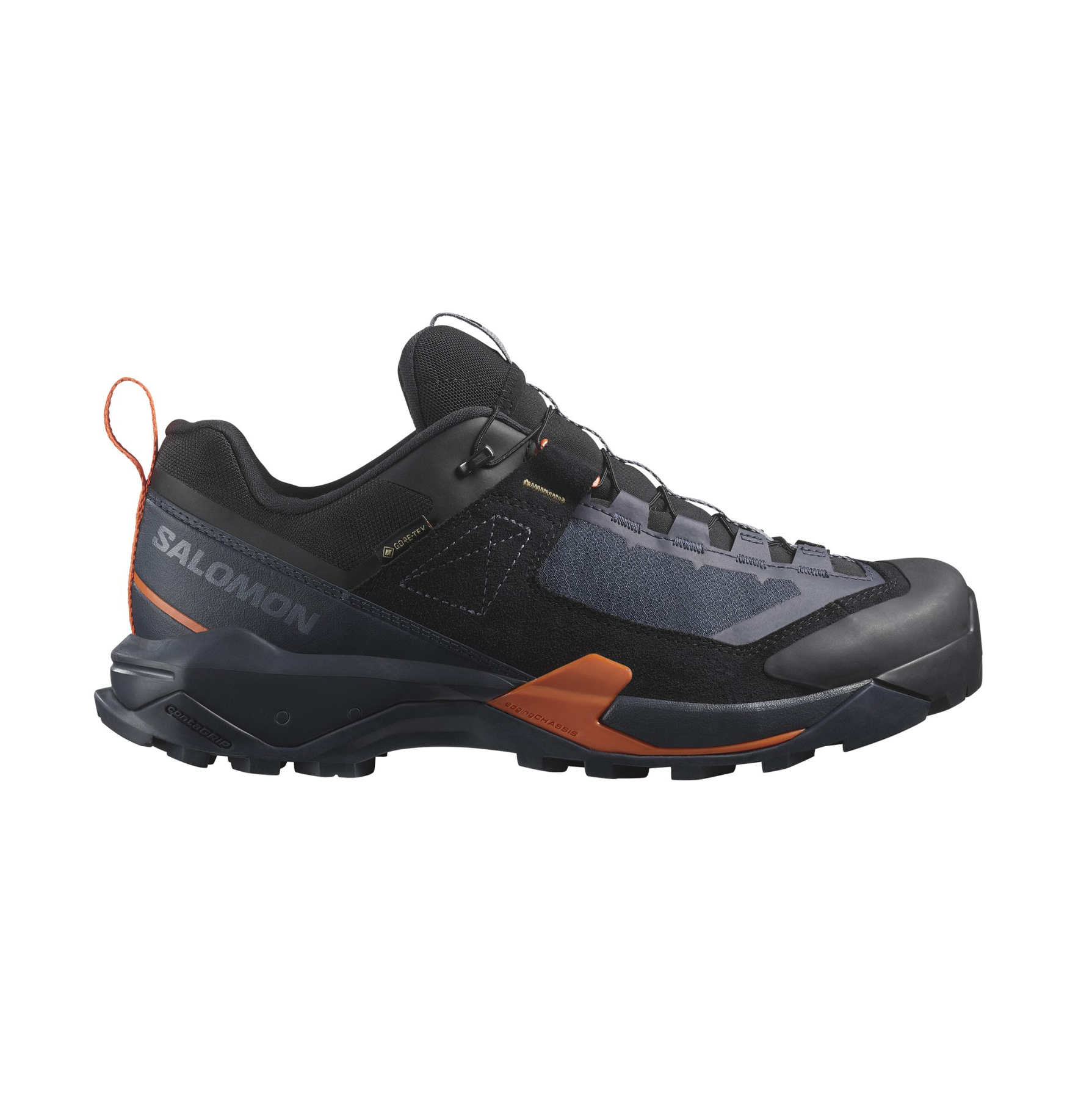
A protective and burly hiking shoe, this is one for more serious, technical adventures. Borrowing features from approach shoes, it provides stability on tough mountain trails and provides a good shield against rock abrasion and other scrapes. Featuring a Gore-Tex waterproof membrane, they'll keep your feet dry too.
Read our full Salomon X Ultra Alpine Gore-Tex hiking shoe review
Pros
- Great for scrambling
- Really smart looking
- Gore-Tex waterproofing
- Highly protective
- Superb grip on a variety of surfaces
Cons
- Heavier than many hiking shoes
- Low cut not great on wet terrain
Comparison table
Hiking shoe | List price | Weight |
|---|---|---|
Aku Omnia V-light GTX | £160 (UK) | 11.6oz / 330g |
Salewa Pedroc Powertex | $179.95 (US) / £175.00 (UK) | 13oz / 345g |
Salomon X Ultra Alpine Gore-Tex | $200 (US) / £180 (UK) | 14.8oz / 420g |
Alex is a freelance adventure writer and mountain leader with an insatiable passion for the mountains. A Cumbrian born and bred, his native English Lake District has a special place in his heart, though he is at least equally happy in North Wales, the Scottish Highlands or the European Alps. Through his hiking, mountaineering, climbing and trail running adventures, Alex aims to inspire others to get outdoors. He's the former President of the London Mountaineering Club, is training to become a winter mountain leader, looking to finally finish bagging all the Wainwright fells of the Lake District and is always keen to head to the 4,000-meter peaks of the Alps. www.alexfoxfield.com
